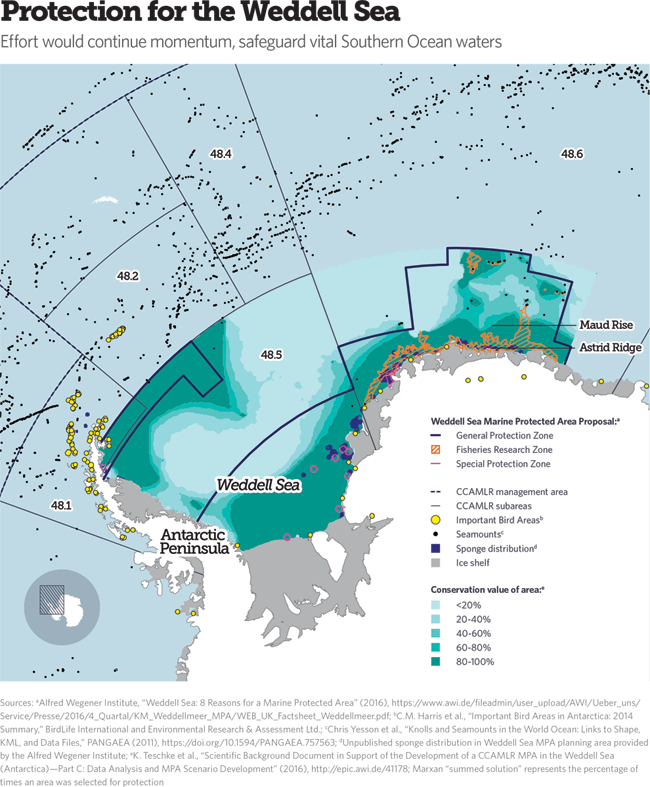Protection for the Weddell Sea
Effort would continue momentum, safeguard vital Southern Ocean waters
These data have been updated. The latest research is available here.
Overview
The Commission for the Conservation of Antarctic Marine Living Resources (CCAMLR) is considering a proposal that would create a marine reserve in the Weddell Sea covering 700,000 square miles (1.8 million square kilometers). The Weddell Sea is a remote, ice-covered embayment east of the Antarctic Peninsula, and one of the most pristine marine ecosystems in the world. This area is a unique habitat known for its outstanding biodiversity, including Antarctic petrels, emperor and Adélie penguins, and multiple species of seals and whales. Far below the sea ice, nutrient-rich benthic ecosystems form key habitat for an array of creatures found nowhere else on Earth, such as glass sponges and cold-water corals.
The Pew Charitable Trusts supports the establishment of permanent, large, no-take marine reserves based on scientific evidence that they strengthen ecosystem health, rebuild biodiversity, and boost climate resilience.
Recommendations
The current proposal includes several positive conservation measures, encompassing three zones, which could be substantially strengthened.
General Protection Zone (GPZ)
- Pew supports the GPZ and would oppose any reduction to the high level of protection it affords the area, especially for Astrid Ridge, Maud Rise, and nearby seamounts.
- Protections should be expanded to include the deep-sea area off the northeastern tip of the Antarctic Peninsula, and northward into CCAMLR management subareas 48.5 and 48.6.
Special Protection Zone (SPZ)
- The SPZ is constrained in area based on known nesting sites and vulnerable marine ecosystems (VMEs).
- To be precautionary, this zone could be enlarged to encompass other likely (but unverified) VME areas, nesting grounds, and additional sensitive areas as these become known.
- Rare, biodiverse, and endemic habitats and features—including canyons, seamounts, and additional sponge habitat—should be safeguarded.
Fisheries Research Zone (FRZ)
- Boundaries and objectives for the proposed FRZ in CCAMLR subarea 48.6 should be clarified and borders should be adjusted to minimize impact on priority conservation areas (e.g., Maud Rise and Astrid Ridge).
- No more than 20 percent of known toothfish habitat should be included from subarea 48.6, reduced from the current 90 percent.
- Research fishing blocks already established by CCAMLR Conservation Measure 41-04 should serve as the FRZ for a period (e.g., one to three years) and then be evaluated based on advice from the Scientific Committee.













